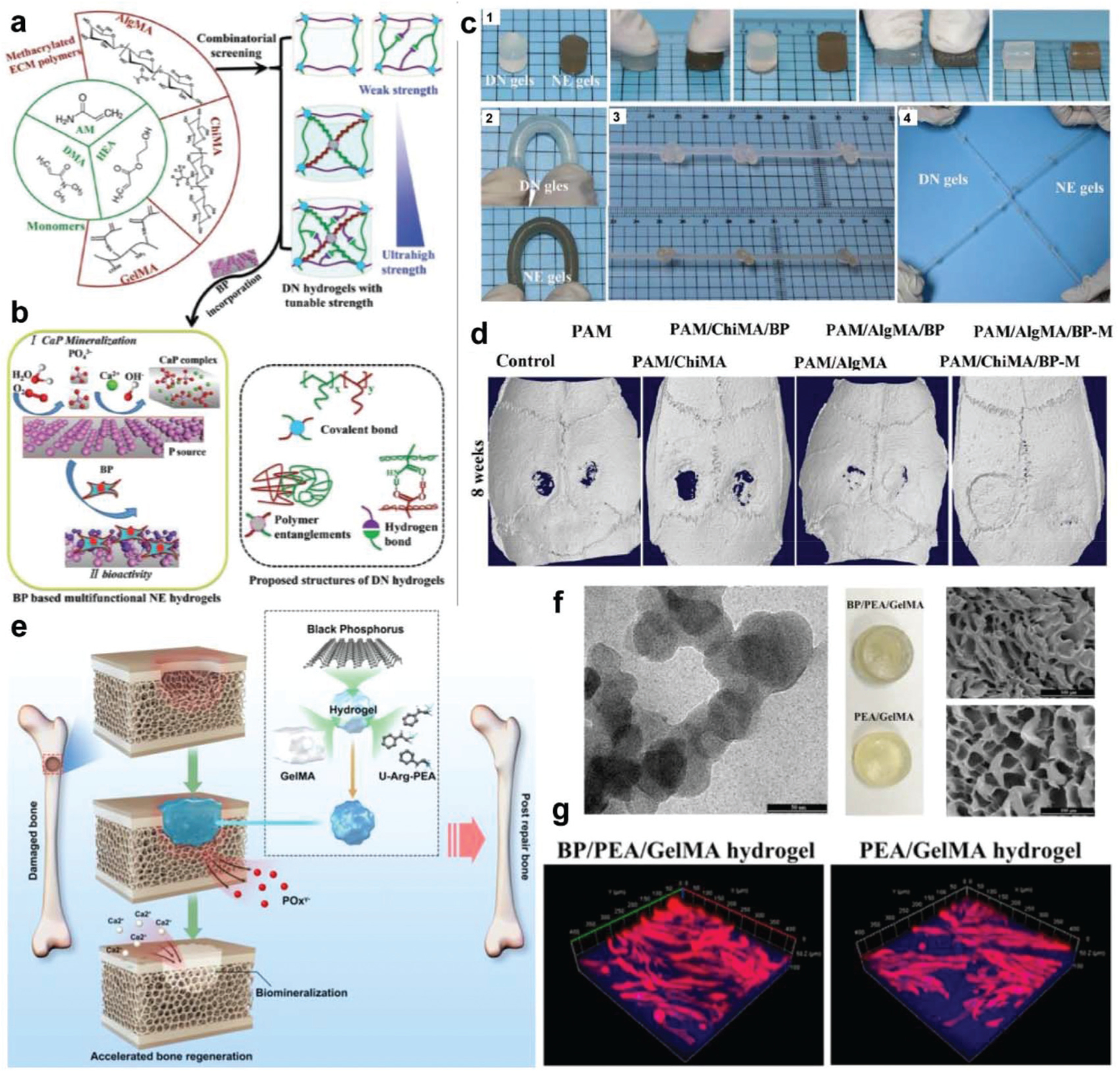Fig. 9.

BP in hydrogel for bone tissue engineering. (a) Schematic demonstration of double network (DN) hydrogels with black phosphorus (BP) nanosheets for biomedical applications, e.g., bone regeneration. The first ductile network was prepared using PHEA, PDMA, or PAM synthetic macro-molecules. The second brittle network was prepared using ChiMA, AlgMA, or GelMA. (b) The BP nanosheets were incorporated to obtain hydrogels that can induce CaP matrix formation and enhance bone regenerations. (c) The obtained PAM/AlgMA gels and PAM/AlgMA/BP gels showed excellent mechanical toughness and could bear strong deformation by (1) compression, (2) bending, (3) knotting, and (4) crossover knotted stretching. (d) Micro-CT images of rat calvarial bone defects with varied gels at 8 weeks post-implantation. The original circular defects were around 4.5 mm in diameter. Reproduced with permission.273 Copyright 2019, John Wiley and Sons. (e) 3D hydrogel with BP nanosheets supplying phosphate ions that can capture calcium ions and thus promote bone defect biomineralization and enhance bone regeneration. (f) TEM image of BP nanosheets and photographs of PEA/GelMA and BP/PEA/GelMA hydrogels. (g) Immunofluorescence images of F-actin filaments (red) and cell nuclei (blue) for human dental pulp stem cells (hDPSCs) cultured on BP/PEA/GelMA hydrogels and PEA/GelMA hydrogels. Reproduced with permission.274 Copyright 2019, American Chemical Society.
